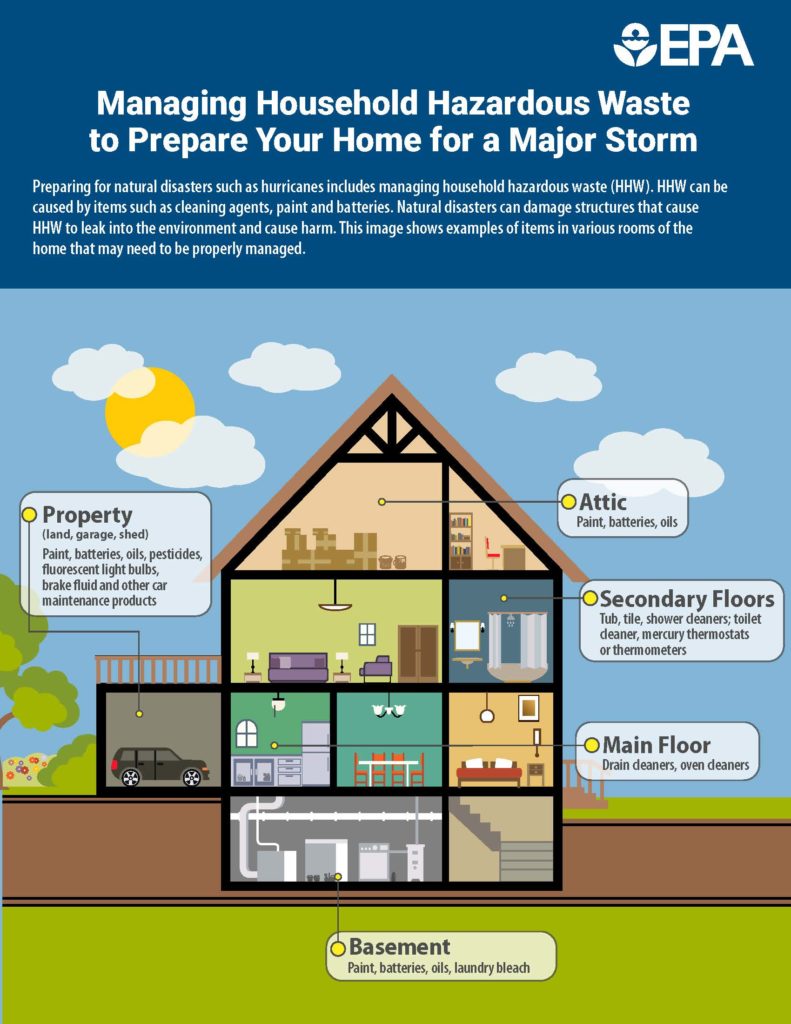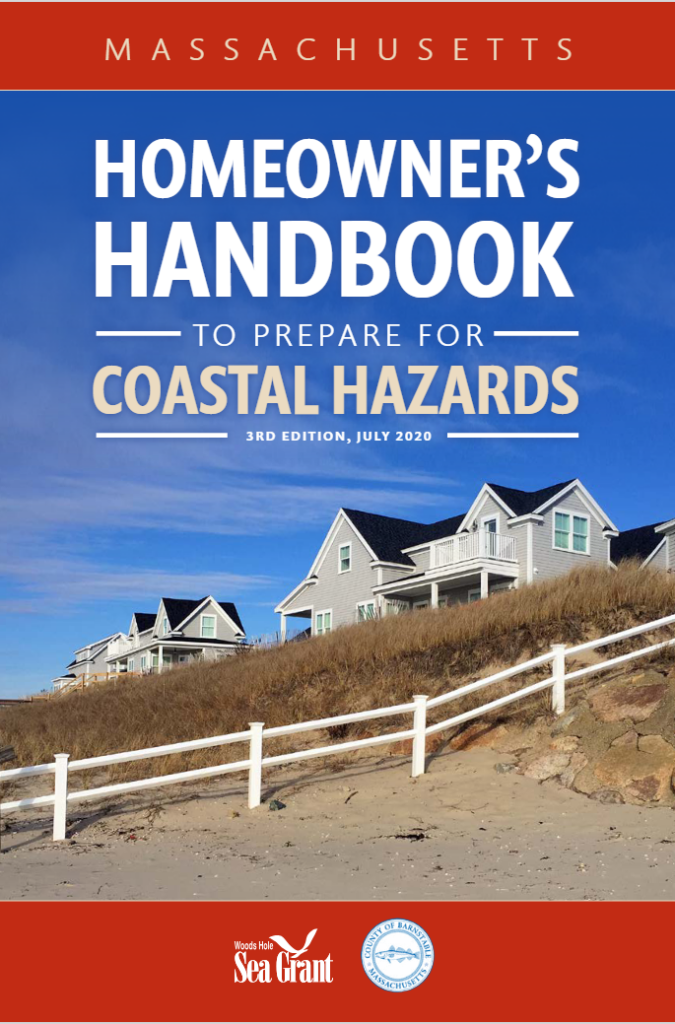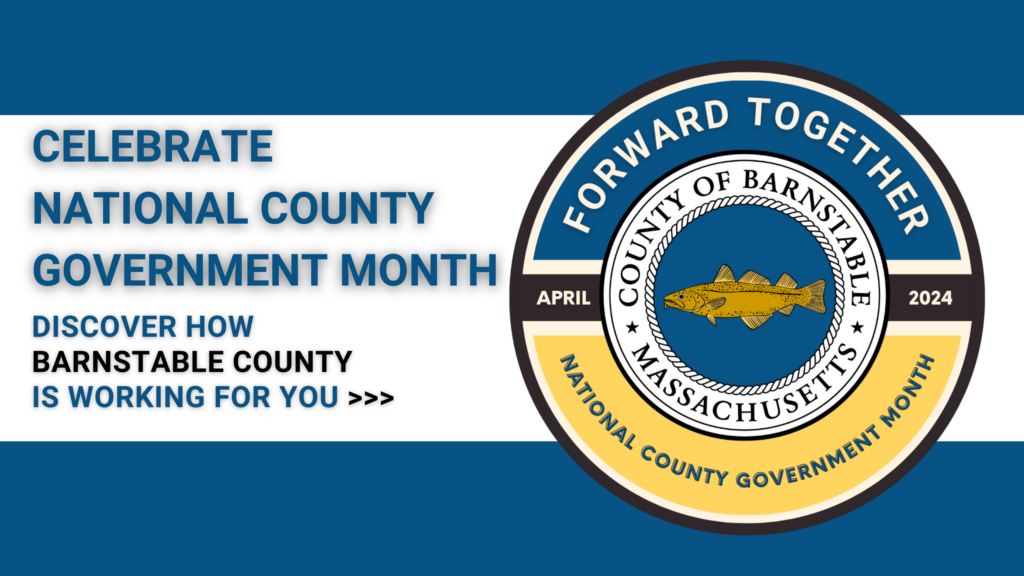
Plan Ahead, Be Prepared to Weather Flooding on Cape Cod
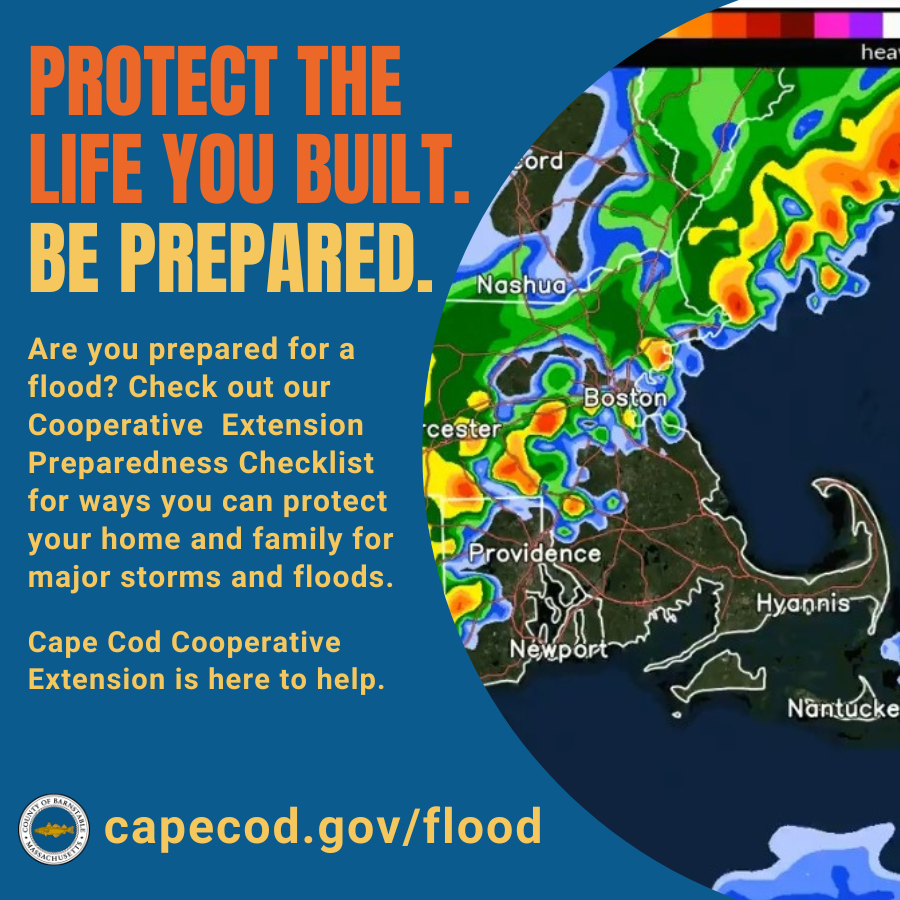
Flooding is inevitable on Cape Cod. If it rains on your property, it can flood- that’s right, you don’t have to live on the beach or near a body of water for your home to flood.
In addition to precipitation, storm surges can cause massive flooding and submerge coastal areas, including homes and streets.
Why Prepare?
Extreme weather can shut down an entire region. It can lead to flooded homes, schools, communications disruptions and power outages. Make sure you and your family are ready. By taking certain necessary steps, residents of Cape Cod can help build resilient communities, reduce injuries and deaths, and minimize the economic impact of disasters and other types of emergencies.
Protect Your Home.
Your home is one of your greatest financial investments. It is a place that shelters you, your family, and most of your possessions from the elements of nature. Yet coastal storms, floods, high winds, and tornadoes can threaten the inhabitants and contents of your home. You can prepare for flooding now by taking a few easy steps:
Extension’s Coastal Flood and Erosion Agents collaborated with Woods Hole Sea Grant to bring you the Massachusetts Homeowner’s Handbook to Prepare for Coastal Hazards. This free handbook was created to help you prepare for natural hazards so that risks to family and property may be reduced. While it is never possible to eliminate all damage from a natural disaster, you as a homeowner can take action and implement many small and cost-effective steps that could significantly lower your risk. Click Here to Download the Massachusetts Homeowner’s Handbook to Prepare for Coastal Hazards.
Find out if you are in a flood zone prone to coastal flooding. These zones have a 26% chance of flooding over the 30-year life of a mortgage. Visit msc.fema.gov and enter your address.
Purchase flood insurance. If it rains on your home it can flood, and most home insurance and renters policies do not cover floods. Many flood insurance policies don’t take effect for 30 days, which highlights the importance of getting coverage before Cape Cod’s major storm season starts. Talk to your insurance agent to find out your options for adding a flood insurance policy. Visit floodsmart.gov for more information.
Prepare Your Family with a Plan: What to do Before, During, and After a Flood.
Some emergencies can force you to evacuate from your neighborhood or confine you to your home. It is important that you know what to do if basic services–water, gas, electricity or telephones–were cut off by utility company. It is essential to have a disaster supplies kit that includes basic items from your home that you may need in case of emergency. Your plan should include:
- Receive Massachusetts Emergency Alerts: get familiar with the 2-1-1 Hotline.
- Disaster Kit Contents
- Make a Plan
- Family Emergency Plan and Communication
- Financial Preparedness: Gathering Financial and Medical Records, and Safeguarding Documents.
- You Are The Help Until Help Arrives: First Aid Care.
We’ve seen the power a storm can carry, and the devastation it leaves behind. Prolonged power outages and flood damage are two of the biggest risks to your food. Fortunately, a plan can help keep you and your family safe from foodborne illness. This includes knowing the proper food safety precautions to take before, during, and after a power outage — and being prepared to safely handle food and water in the event that flooding occurs.
- Prepare Yourself Before Power Emergencies
- Power Outages: During and After
- If Flooding Occurs: Keeping Food and Drinking Water Safe.
- About Foodborne Illness: Symptoms and What to Do.
Eating Safe After a Power Outage: Click here for the printable flyer, Eating Safe After A Power Outage | Consuma alimentos seguros despues de un corte de electricidad | Sekirite Manje Lè Gen Pann Kouran | 停电后保持食品安全 | An toàn thực phẩm trong trường hợp mất điện | السلامة الغذائية عند انقطاعات التيار الكهربائي
Don’t drive in flooded areas — turn around, don’t drown!
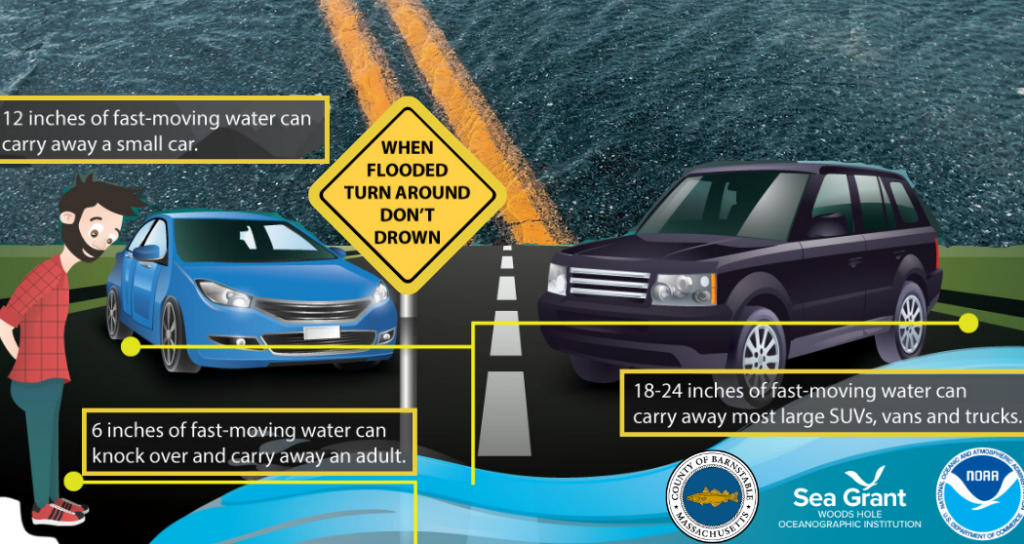
Floodwater can pose a drowning risk for everyone, and people underestimate the force and power of water. Swiftly moving shallow water can be deadly, and even shallow standing water can be dangerous for small children. Many deaths and injury occur in cars swept downstream. Never drive around the barriers blocking a flooded road. The road may have collapsed under that water. A mere 6 inches of fast-moving flood water can knock over an adult. It takes just 12 inches of rushing water to carry away most cars and just 2 feet of rushing water can carry away SUVs and trucks. It is NEVER safe to drive or walk into flood waters.
If there is a chance for flooding on the roads, be sure to remove everyday household hazardous waste chemicals from your vehicle (think fuel containers with gas, yard chemicals, paint thinners, cleaners). If floodwaters come in contact with these items, the chemicals will contaminate the surrounding waters, posing risks to the environment, human health, and our drinking water.
Protect Your Family and First Responders from Household Hazardous Waste.
Many chemicals, materials, and products commonly found in the home are toxic and can be harmful to your health and our environment. These are called Household Hazardous Waste. Products, such as oil-based paints, cleaners, and pesticides can contain hazardous ingredients and require special care when you dispose of them or when you decide to store them in your home. Some leftover household products can react or explode under certain circumstances, such as a flood or fire in your home due to a storm. This situation can endanger your family as well as police, fire, and rescue teams who would be responding to emergencies during storms. To get rid of these leftover or unused chemicals, you can dispose of your household hazardous waste during Barnstable County’s Household Hazardous Waste Collections that take place from spring to fall. Click here for your town’s brochure and event schedule during collection season. During the off-season you reach out to Kalliope Chute, Extension’s Hazardous Materials Environmental Specialist, at #508-375-6699, kalliope@capecod.gov for info on safely storing or disposing of your household hazardous waste. You can also click here to visit the Household Hazardous Waste webpage for resources and information.
If you decide to store hazardous products in your home, follow best management practices to avoid flood waters from reaching these dangerous chemicals and contaminating your property . For example, store chemicals above potential flood levels but never above eye level. Store poisons and toxic substances so children and pets cannot access them. Store ignitable or flammable materials in flame-retardant containers, such as metal garbage cans with lids to reduce oxygen access. Check with your local fire, health, or emergency preparedness coordinator for more information. Check for hazardous products around your house and make note of your storage locations. This map can help you take an inventory of storage locations around your home.
